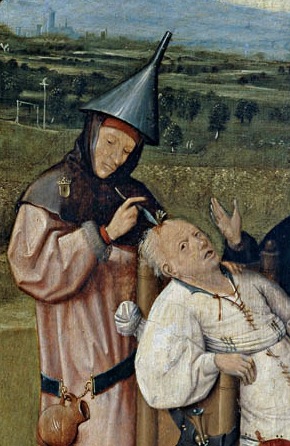Top Qs
Timeline
Chat
Perspective
Stone of madness
Hypothetical stone in medieval folklore From Wikipedia, the free encyclopedia
Remove ads
The stone of madness, also called stone of folly, was a hypothetical stone in a patient's head, thought to be the cause of madness, idiocy or dementia. From the 15th century onwards, removing the stone by trepanation was proposed as a remedy.[1][2] This procedure is demonstrated in the painting The Extraction of the Stone of Madness by Hieronymus Bosch.[3]

Remove ads
Gallery
- Quentin Massys, An Allegory of Folly (early 16th century). The fool has a "stone of folly" in his forehead.
- Pieter Huys, A surgeon extracting the stone of folly
- Jan Sanders van Hemessen, 1550s
- After Hieronymus Bosch, 16th century
- Pieter Jansz. Quast,
Die Steinoperation, ca 1630
References
External links
Wikiwand - on
Seamless Wikipedia browsing. On steroids.
Remove ads





